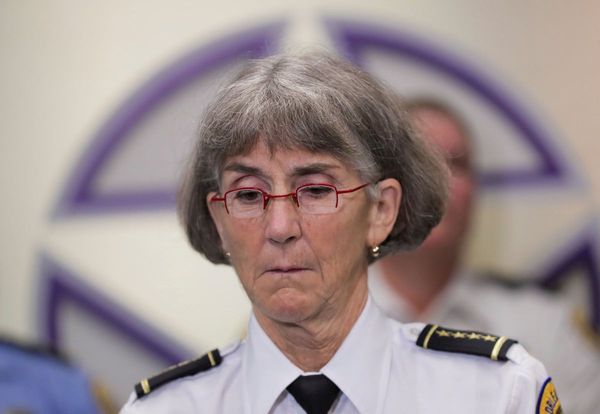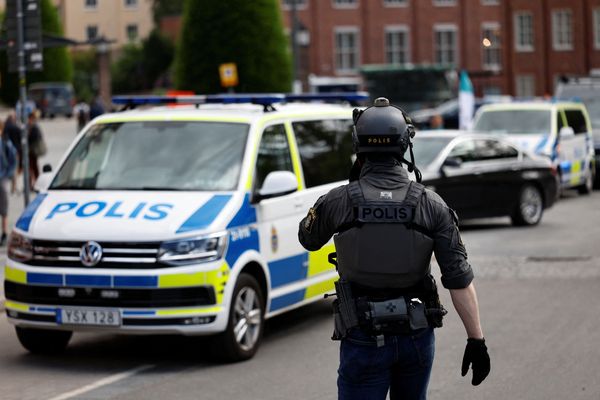
Filled with lustful murderers, dishevelled streetwalkers and hollow-eyed wartime amputees, George Grosz’s jagged sketches of Berlin street life during the Weimar Republic never sought to capture the German metropolis at its most beautiful.
Only fitting, then, that Berlin’s first museum dedicated solely to its master chronicler should not be in the gilded neoclassical halls of the German capital’s Museum Island but a seedier part of the city in which the satirist and Dada artist was born and died.
The Little Grosz Museum opens on Friday inside a former petrol station on the dusty Bülowstraße thoroughfare, overlooked by a noisy elevated metro track, and a stone’s throw from the German capital’s red-light strip around Nollendorfplatz.

It began as a privately funded initiative started seven years ago by Ralph Jentsch, the managing director of Grosz’s estate. It does not have its own collection but will present works loaned from other galleries over two compact gallery floors.
“George Grosz is an artist of worldwide renown, yet there is no museum on this globe that permanently shows more than two of his paintings,” Jentsch told the Guardian.
This is in part because his work was spread far and wide in the tumult of 1920s and 30s Germany, and in some cases destroyed. Subject to several court cases during the Weimar years – over defamation of the German army, blasphemy and “attacks on public morals” – about 300 of Grosz’s works were seized, then sold or burned as degenerate art by the Nazis after he emigrated to the US in 1933. “Plans for a Grosz museum were long hampered by that dispersal,” said Jentsch.
The small museum, which cannot hold more than 60 people at a time, serves up a reminder of the relevance of an uncompromising artist politicised by the horrors of war – while also correcting some of the myths about its hero along the way. In spite of his pacifist inclinations, Grosz volunteered to join the army in November 1914, in the hope of preempting conscription and avoiding being sent to the front.

One commonly told story, fed in part by the artist’s own vague descriptions of his wartime activity, is that the violence he witnessed in the first world war fired up the violent imagination of his later works and alienated him so radically from Germany that he decided to anglicise his name from Gross to Grosz to make a political statement.
The curators of “Please write Grosz instead of Gross”, the museum’s first exhibition, say that tells only half the story. After tracking down Grosz’s military medical records, they say it is likely the dadaist never experienced any frontline action first-hand. While his regiment fought trench warfare in Flanders in February 1915, Grosz was recovering at Berlin’s Charité hospital, having fallen ill with sinusitis on the way to the front. How closely to the front the artist was when he collected impressions that would result in a series of four sketches with titles such as Battlefield, is unclear.
When being redrafted into the reserve army two years later, Grosz had a mental breakdown, with officers finding him naked from the waist down on his first night. After the then 23-year-old tried to attack a medical officer with a knife, he was sent to a specialist hospital for patients with nervous system disorders where he spent the rest of the war.
“Grosz saw the flipside of wartime heroism, but mainly from within hospitals, in the company of those spat out by the front,” said Pay Karstens, the exhibition’s curator.

Digging through Grosz’s archive of early works, Karstens discovered that the artist’s change of surname took place years before the war, making a purely political motive unlikely. Born Georg Ehrenfried Gross, he signed his first work “Grosz” in 1906, aged 13, when an anti-nationalist sentiment was unlikely to have been held as a principled belief.
“Grosz wanted to become a successful illustrator for satirical magazines at the time, and he needed a brand name,” said Karstens. “Gross was too much of an everyday name for that.”
The anglicisation of his first name, by contrast, was a deliberately provocative act, at a time when other artists and poets celebrated their hatred of the wartime enemy, England.

“After witnessing this year of war, I am no longer such a strong friend of my fatherland,” he wrote to a friend in June 1916. Pictures such as 1917’s German Men, piled with grotesquely fat men in uniforms, show an artist thoroughly disgusted with his country of birth. From 1917, the letters he sent from his hospital bed were signed “George Grosz”.
Unlike his Dada jester-in-arms Helmut Herzfelde, who anglicised his name to John Heartfield around the same time, Grosz never sought to change his name officially by deed poll after the end of the war.
Instead he voted with his feet and left for New York, and later Huntington, shortly after the Nazi party emerged as the biggest political force in the 1932 elections. One of the planned exhibitions at the Little Grosz Museum will focus on the works he produced in the US, a country in which he felt enough at home to opt for naturalisation, but where his new work was often ignored in favour of his sketches of Weimar Berlin.
Other shows will focus on Grosz’s pioneering photo collages and his 1922 trip to the Soviet Union, which included an audience with Lenin.
With a total of 10 six-month temporary exhibitions planned, the museum’s lifespan is likely to be limited to five years. “If Berlin still wants to have a Grosz museum after that, it needs to cough up,” said Juerg Judin, the Swiss art collector who turned the converted Shell petrol station into his home 10 years ago and has temporarily offered it to the curators.







